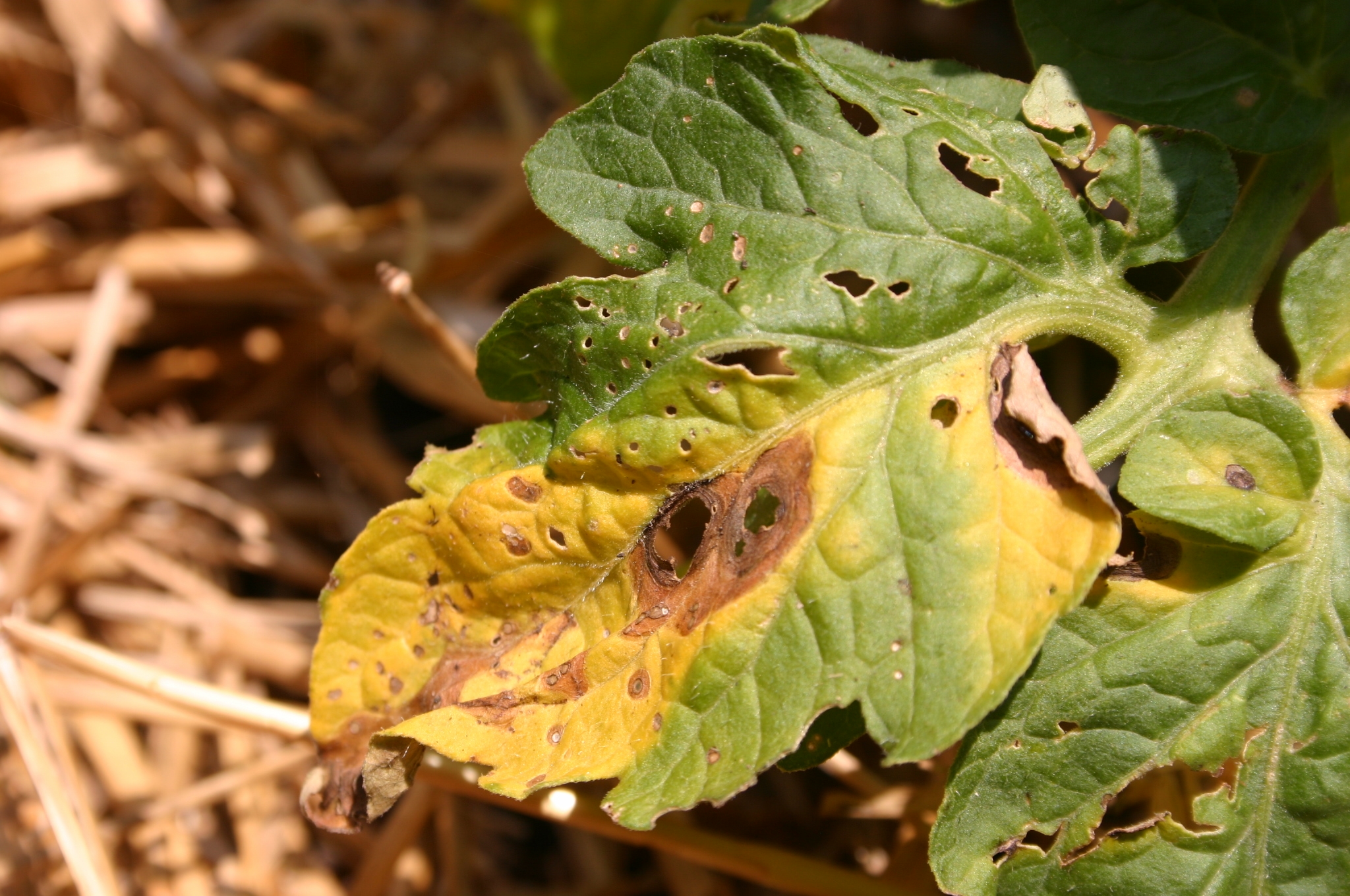

Greasy-Greenish-Spots – like something out of a Dr.This blight moves fast and can completely defoliate a plant in about two weeks. Blue-Gray Spots – leaves will show spots that start out as a blue-gray color and turn brown before falling off.Identifying Late Blight Notice the yellow tinge around the outer edge of the brown spot. Late blight is really tricky to deal with as it spreads in the soil via infected plants and potatoes and spores floating in the air. Phytophthora infestans were originally thought to be fungus but have since been reclassified as a water mold or oomycete. It infects tomatoes and potatoes and was responsible for the horrific Irish potato famine in the mid-1800s. Brown or olive-green leathery patches show up on tomatoes infected with late blight. Its Latin name translates to Plant Destroyer, just to give you an idea of how nasty this stuff is. Late blight, or Phytophthora infestans, is a fascinating form of blight. They can also develop spots with the tell-tale bullseye. Dropped Fruit – Tomatoes usually fall off the plant.Sunken Stems – stems of the plants will also develop brown rings with the bullseye pattern.Leaves Fall – infected leaves may fall off the plant quickly, leaving the developing fruit open to sunburn.Yellow Ring – the very outer edge of the spots may have a yellow ring around them.Bullseye – early blight has a very distinct rotting pattern on the leaves, stems, and fruit of the plant, which looks like a bullseye or a tree’s rings.Identifying Early Blight A bullseye or tree ring shape makes early blight easy to identify. This is why it’s so important to catch blight early on.Įarly blight can show up at the beginning of the season right up to the middle of the growing season. It’s important to note that after that initial infection, subsequent infections can happen via splashed dirt from rain or overhead watering or spores spread by the wind. You’ll notice the bullseye pattern of the spot.

It’s important to remove these plants, to keep your yard blight free.Īnd the right weather happens to be a nice stretch of rainy weather when it’s warm and humid out.Īfter a period of heavy rain, the spores infect the plant, and within a matter of days, you may begin to notice symptoms. This horsenettle makes a great spot for early blight to hang out over winter. After the first infection, it can also find safe harbor in nearby weeds or volunteer plants which can then infect your beautiful tomatoes. It hangs out in the ground over the winter, waiting for the right weather to attack. It’s kind of cute for a tomato destroying fungus.Įarly blight is a soil-born fungus, Alternaria solani. I’m sure you’ve already guessed by its name that early blight is the first of these on the scene each year. There are three different types of blight you need to keep an eye out for.
FIRE BLIGHT ON TOMATOES HOW TO
So, we’re going to take a good hard look at them and discuss what they are, how to spot them (ha, pun intended) and most importantly, what to do if you find blight in your garden. Nothing spells the end of a tomato season faster than finding your plants infected with any of these blights. There’s nothing sadder than losing your harvest to tomato blight. (Ha! Who am I kidding? I’ll be lucky if I have any left in November.)Īnd to help you get more of those perfect tomato years, we’re going to tackle a word that strikes fear into every tomato gardeners’ heart – blight. And pint-sized jars of ratatouille stacked two high and four deep that you tell yourself you’re going to savor and make last to February this year. Fresh, spicy salsa is ready to be enjoyed all through the winter. You end up with jars of diced tomatoes and tomato juice lining your shelves. I’m sure you can relate.īut oh, when you get that perfect year where you’ve done everything right, that year where the pests congregated in someone else’s garden and mother nature blessed you with the perfect amount of rain and sun. Life would be so much easier if I were one of those people who didn’t like tomatoes. Why are my tomatoes still green it’s nearly September?Īnd yet, I don’t think I’ve ever had a garden without tomatoes.Lettuce? With a little care, you can say goodbye to grocery store lettuce forever. Potatoes? Not nearly as hard as I thought they would be. If there is one plant in my garden that gives me problems year after year, it’s tomatoes.


 0 kommentar(er)
0 kommentar(er)
